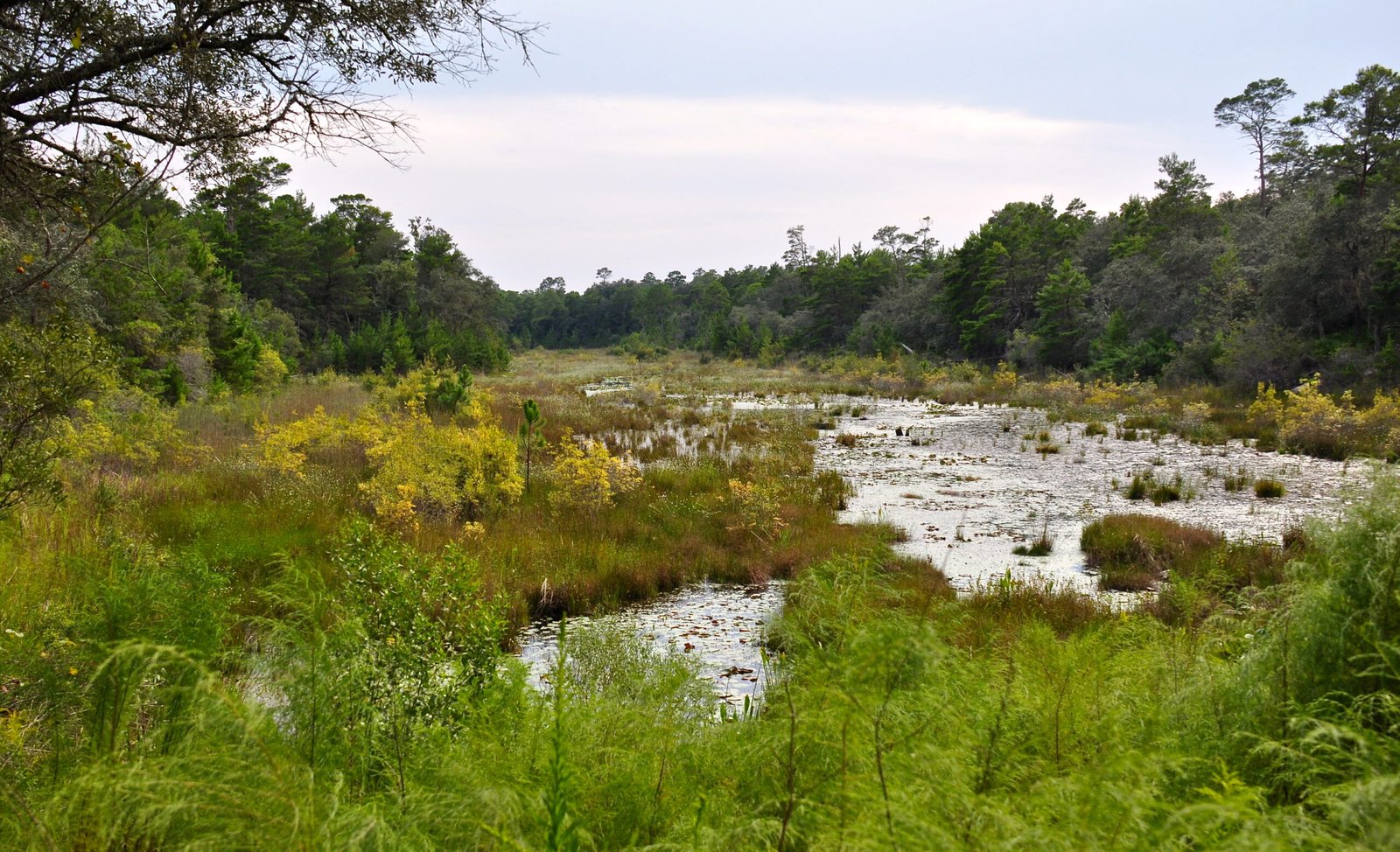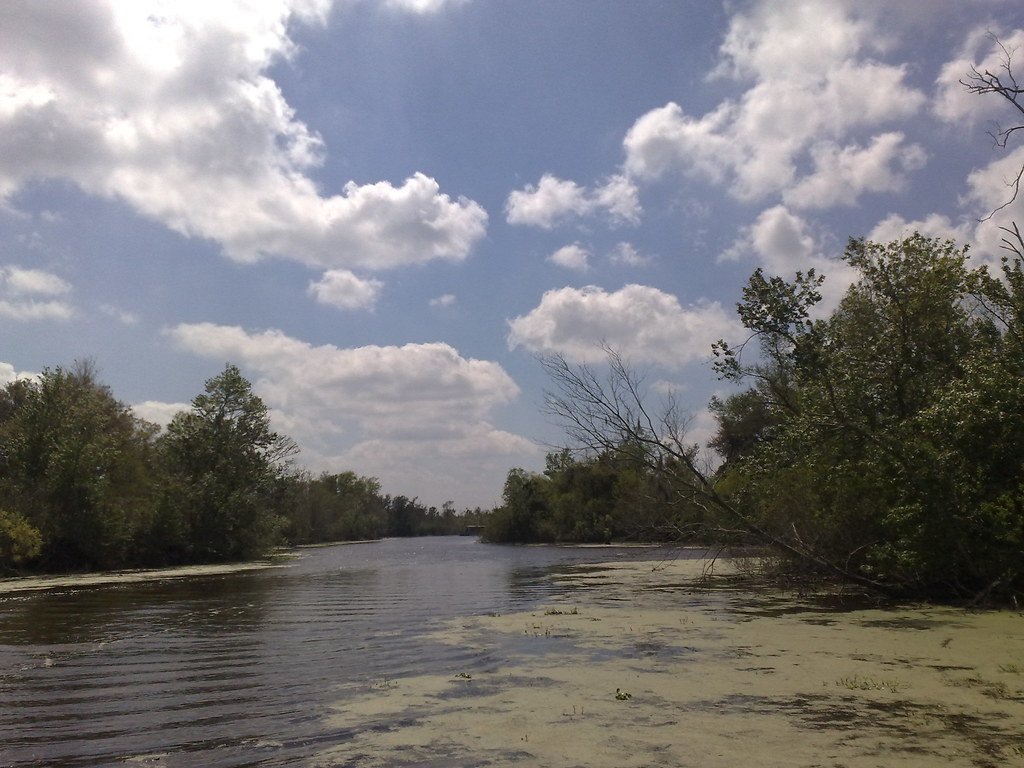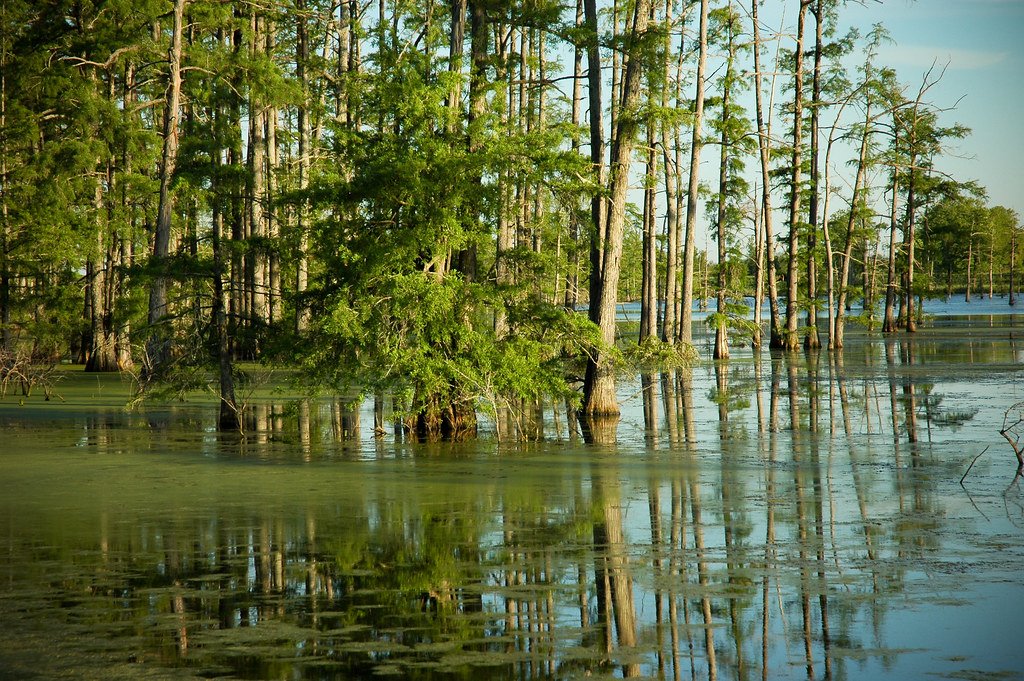Deep in Louisiana’s sprawling wetlands, where cypress trees rise like ancient sentinels from dark water and Spanish moss drapes the landscape in ghostly veils, an invisible army works tirelessly beneath the surface. These microscopic warriors don’t carry weapons or wear uniforms, but they might just hold the key to one of our most pressing environmental challenges. When crude oil spills into our precious waterways, these tiny organisms spring into action with a hunger that’s both surprising and hopeful.
The Silent Sentinels of Louisiana’s Waters

Louisiana’s bayous aren’t just postcard-pretty landscapes—they’re living laboratories where bacteria and other microbes are the only thing that will ultimately clean up oil spills, removing most of the oil from the environment in these situations. Picture this: every drop of water in these wetlands contains millions of these microscopic cleaners, waiting for their moment to shine. When disaster strikes and oil enters their domain, these microbes don’t panic—they feast. It’s like having a cleanup crew that actually gets excited about the mess they’re hired to tackle. The bayous have been training these biological janitors for millions of years, creating what scientists call a “microbial community” that’s perfectly adapted to breaking down hydrocarbons.
When Oil Meets Its Match

The last defense against oil spills is tiny—billions of hydrocarbon-chewing microbes, such as Alcanivorax borkumensis. The primary motive for using chemical dispersants on oil slicks is to break the oil into smaller droplets that bacteria can more easily consume. Think of it like cutting up food for a toddler—the smaller the pieces, the faster they can gobble it up. When there is a spill of crude or refined oil, the bacteria capable of degrading hydrocarbons proliferate quickly. Eventually, the microbes will “take care” of the problem by consuming the oil compounds that are biodegradable. These microscopic powerhouses don’t just eat oil—they transform it into harmless carbon dioxide and water, turning pollution into the basic building blocks of life.
The Deepwater Horizon Lesson

“The microbes did a spectacular job of eating a lot of the natural gas,” says biogeochemist Chris Reddy. “The rate and capacity is a mind-boggling testament to microbes”. The 2010 Deepwater Horizon disaster, which dumped nearly 5 million barrels of oil into the Gulf of Mexico, became an unexpected classroom for understanding how these tiny cleanup crews work. Ocean currents spurred microbial activity, allowing a bacterial bloom to turn millions of barrels of oil into an estimated 100 sextillion microbial cells. That’s a number so large it’s almost impossible to comprehend—imagine if every grain of sand on every beach multiplied by a trillion. Scientists watched in amazement as populations of oil-eating bacteria exploded in the wake of the spill, proving that nature has its own emergency response team.
Meet the Microscopic Heroes

Alcanivorax borkumensis is an alkane-degrading marine bacterium which naturally propagates and becomes predominant in crude-oil-containing seawater. This rod-shaped bacterium obtains its energy primarily from consuming alkanes (a type of hydrocarbon). Picture a microscopic Pac-Man, chomping through oil molecules with relentless efficiency. Now known as Alcanivorax borkumensis, the bacteria was able to digest oil by breaking down petroleum hydrocarbons with the use of special enzymes—something no other known bacteria can do. These bacterial superstars don’t work alone—they’re part of a diverse community that includes species like Marinobacter and Cycloclasticus, each with their own specialties for breaking down different types of oil compounds.
Louisiana’s Natural Oil-Fighting Laboratory

Oil contamination had a profound impact on the abundance and community composition of indigenous bacteria in Gulf beach sands, with evidence pointing to members of the Gammaproteobacteria (Alcanivorax, Marinobacter) and Alphaproteobacteria as key players in oil degradation. Louisiana’s wetlands are like a massive research facility where these microbes have been perfecting their oil-eating skills for millennia. In the salt marsh, the invisible creatures, the microscopic detritivores like bacteria and fungi, are the dominant channel of energy flow. Every square inch of mud, every blade of marsh grass, every drop of brackish water hosts communities of these microscopic workers. They’ve evolved alongside natural oil seeps that have been bubbling up from the seafloor for thousands of years, creating a biological workforce that’s uniquely qualified for oil cleanup duty.
The Chemistry of Cleanup

Alcanivorax borkumensis forms a biofilm around an oil droplet in seawater and proceeds to use biosurfactants and metabolism to degrade the oil into a water-soluble substance. The substances that make up the biosurfactant can reduce the surface tension of water, which helps with the degradation of oil. It’s like watching a microscopic car wash in action—the bacteria don’t just eat the oil, they produce their own soap to make the job easier. Bacteria can break down oil to carbon dioxide and water. However, no single organism can break down all the components of crude oil or refined fuels spilled into the environment. This is why teamwork matters even at the microscopic level—different bacteria specialize in different types of oil compounds, working together like a well-coordinated cleaning crew where each member has their own special tools and techniques.
Speed Matters: The Race Against Time

The local community of microbes is already adapted to the background supply of oil. It takes a certain amount of time—a lag time—for their populations to increase in response to the influx of new resources. The surge of oil from a leak or spill can temporarily outpace the capacity of the local oil-degrading microbes. Think of it like a restaurant suddenly getting hit with a massive lunch rush—the staff is capable, but they need time to ramp up production. The microbes break down hydrocarbons in “weeks to months to years, depending on the compounds and concentrations—not hours or days”. This isn’t instant gratification—it’s more like slow cooking, where patience and the right conditions create the best results. The heavier, more complex oil compounds are like tough pieces of meat that need longer cooking times to break down properly.
Feeding the Cleanup Crew

It is possible to add fertilizers, such as iron, nitrogen and phosphorus, to stimulate the growth of such bacteria. “We saw a three to five times increase in rate of biodegradation,” suggesting the technique might prove effective along oil-contaminated coastlines. Just like any workforce, these microscopic cleaners perform better when they’re well-fed. To increase the growth rate of Alcanivorax borkumensis bacteria, phosphorus and nitrogenous compounds can be added to the environment. These substances act as a fertilizer for the bacteria and help them grow at an increased rate. Scientists have learned that these bacteria are often limited not by their appetite for oil, but by their need for basic nutrients—it’s like having a crew of hungry workers but no lunch money to feed them properly.
The Bayou Lafourche Wake-Up Call

An oil spill that leaked more than 34,000 gallons out in a southern Louisiana bayou has already killed wildlife and prompted a water conservation order. The oil spill happened in Bayou Lafourche, about a half-hour drive northeast of Houma. Recent events in Louisiana have reminded us why understanding these microscopic cleanup crews is so crucial. Bayou Lafourche provides drinking water for Lafourche, Terrebonne, Assumption and parts of Ascension parishes, which are home to more than 300,000 people. An advisory to conserve water was lifted as cleanup continues on the section of the bayou where oil sullied the banks and threatened wildlife. When disaster strikes close to home, we’re reminded that these waterways aren’t just tourist destinations—they’re lifelines for entire communities. The speed and effectiveness of microbial cleanup could mean the difference between a brief disruption and a long-term catastrophe.
Beyond Louisiana: The Global Potential

Alcanivorax borkumensis is a bacterium that feeds on hydrocarbons. Professor Satinder Kaur Brar and her team have conducted laboratory tests that show the effectiveness of enzymes produced by the bacterium in degrading petroleum products in soil and water. The lessons learned in Louisiana’s wetlands aren’t staying put—they’re traveling around the world. By adding microbes, up to 99 percent of the hydrocarbons could be eliminated within 30 to 120 days. “The humates break down the oil and that makes it easier for the microorganisms to consume”. Scientists are developing new technologies that combine these natural oil-eaters with other compounds to create super-efficient cleanup systems. It’s like taking the best players from Louisiana’s microbial all-star team and coaching them to work even better in different environments around the globe.
The Wetland Advantage

Bioremediation shows potential as an oil spill remediation technique for wetlands. However, considerably more information is needed before this potential can be realized and the effectiveness of bioremediation can be maximized. Louisiana’s wetlands offer unique advantages for microbial oil cleanup that other environments simply can’t match. A major concern in oil spill response is the integration of oil cleanup and habitat restoration. Can we employ methods that simultaneously accelerate oil degradation and promote habitat restoration? One methodology that has this potential is phytoremediation. The plants, water, and sediment in these ecosystems work together like a three-dimensional cleanup factory, with bacteria doing the heavy lifting while plants and other organisms provide support and create the right conditions for maximum efficiency.
Engineering Nature’s Solutions

Floating wetlands may be a successful bioremediation strategy for oil spills. Plants and bacteria have higher degradation capacity when together than alone. Scientists are now taking inspiration from Louisiana’s natural systems to create artificial cleanup solutions. The combination of nanomaterials to enhance bioremediation is an emerging area for oil spill remediation. Initial reports suggest improvements for enhanced bioremediation including increasing the growth rate of oil-degrading species and increased biodegradation. It’s like taking the blueprint of a successful restaurant and franchising it—scientists are figuring out how to recreate the ideal conditions for microbial oil cleanup in places where nature hasn’t already perfected the system. These engineered solutions could bring Louisiana’s wetland wisdom to oil spills anywhere in the world.
The Limits of Microscopic Magic

Much of the real tar or asphalt compounds are not readily subject to microbial attack. Tar tends to persist. Asphalt tends to persist. “We wouldn’t make roads out of them if the bacteria ate them”. Even these microscopic superheroes have their kryptonite—some oil compounds are simply too tough for biological breakdown. There are certain relatively closed ecosystems, like estuaries, salt marshes, or wetlands, where oxygen depletion from oil degradation is sufficient to harm organisms. Oxygen depletion is more likely to affect ecosystems where the natural supply of oxygen tends to be limited. Understanding these limitations is crucial because even the best cleanup crew can cause problems if they’re working in the wrong conditions or trying to tackle the wrong type of mess.
Racing Against Climate Change

The Gulf of Mexico is subject to general sea level rise being observed worldwide. Over the past century, the warming climate has pushed up mean sea level four to eight inches worldwide. By 2100, global sea level is projected to rise an additional 19 inches along most of the U.S. coastline. Louisiana’s wetlands are fighting a two-front war—against oil pollution and against climate change. Since the 1930s, Louisiana has lost about 2,000 square miles of coastal wetlands. “It’s a resilient ecosystem, but it’s also a fragile ecosystem”. As sea levels rise and wetlands disappear, we’re losing not just beautiful landscapes but also our most effective natural oil cleanup facilities. It’s like watching our best hospitals close just as we need them most—the urgency to understand and protect these microbial communities has never been greater.
The Economics of Microbial Cleanup

Bioremediation has been touted as the emerging oil spill countermeasure of the 21st century. An advantage of this environmentally friendly technology is its relatively low cost, as it does not require large numbers of personnel or highly specialized equipment. When oil companies and governments face the staggering costs of traditional cleanup methods, microbial solutions start looking very attractive. Major oil spills have damaged millions of acres of habitat, ruined entire industries and cost billions of dollars in cleanup costs. Current techniques are expensive and hard on the environment. Plus, it can take decades for ecosystems to recover to their pre-spill condition. Think of it this way: traditional cleanup is like hiring a crew to scrub every surface by hand, while microbial remediation is like having millions of tiny workers who multiply themselves and work for free, requiring only basic nutrients as payment.
Training Tomorrow’s Cleanup Crews

As we gain a better idea of the genetic composition of these bacteria and how bacteria communities cooperate, we can develop bacteria-friendly dispersants that help humans and bacteria work together harmoniously. “We need to make sure our response to a spill doesn’t interfere with this natural response”. Scientists are working to understand exactly how these microscopic cleanup crews operate so they can design better support systems. As genomic technologies continue to develop, we will be able to simultaneously monitor thousands of microbial species to understand how microbes control ecosystem dynamics. The wealth and diversity of microbes undoubtedly contributed to ecosystem recovery. It’s like having a coaching staff that studies game films to understand how the team works together, then designs plays that let each player use their strengths to maximum advantage.
The Future is Microscopic

Microbial mats and biofilms-based bioremediation has a bright future if creative solutions are created to tackle environmental issues. These solutions will be driven by foundational discovery-based research, but their successful application will depend on inventiveness and a thorough grasp of microbial behaviour. The tiny organisms working in Louisiana’s bayous today might be the prototype for tomorrow’s environmental solutions. Nano-enhanced bioremediation is a new field of study, and more research is needed. Nanomaterials from natural precursors that are biocompatible, have low toxicity, and are biodegradable could lead to a new class of oil spill remediation technology. Imagine a future where oil spills are handled not by massive cleanup operations with boats and booms, but by deploying armies of enhanced microorganisms that can tackle pollution faster and more completely than anything we’ve seen before.
A Breath of Hope from the Bayou

In Louisiana’s mysterious wetlands, where alligators glide silently through dark water and herons stand motionless among the reeds, microscopic heroes work around the clock to keep our world clean. These invisible guardians have been perfecting their craft for millions of years, turning toxic spills into harmless byproducts with an efficiency that puts human technology to shame. It was the unseen microbes that were largely responsible for the disappearance of spilled oil. Responders to future spills would do well to mobilize scientific understanding of the unique conditions of the spill to determine the best possible approach to minimize environmental impact. As we face an uncertain future filled with environmental challenges, perhaps our salvation lies not in grand technological solutions, but in learning to work alongside the tiny cleanup crews that have been saving our planet all along.
The next time you see a Louisiana bayou stretching endlessly toward the horizon, remember that beneath that tranquil surface, millions of microscopic warriors stand ready to defend our waters from the next oil disaster. In their microscopic world, hope floats on every molecule they transform, every droplet they purify, every ecosystem they help restore. Could these tiny defenders of the deep hold the key




